#loss of wildlife
Photo
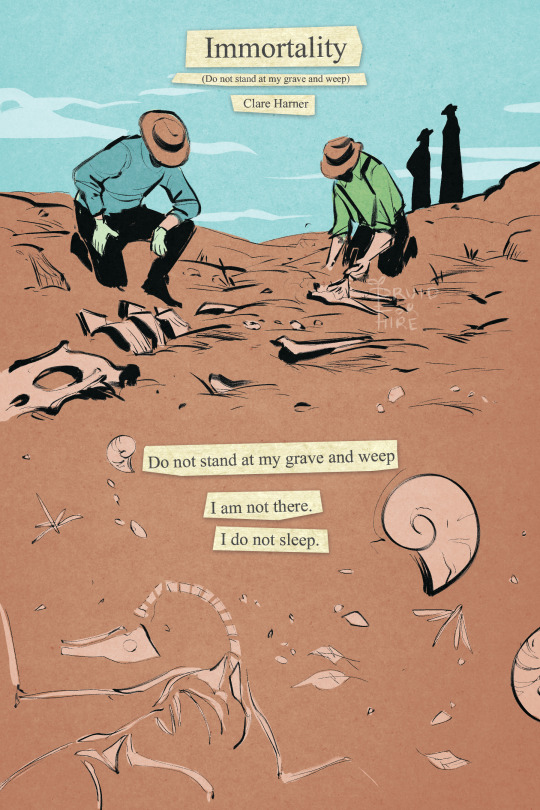

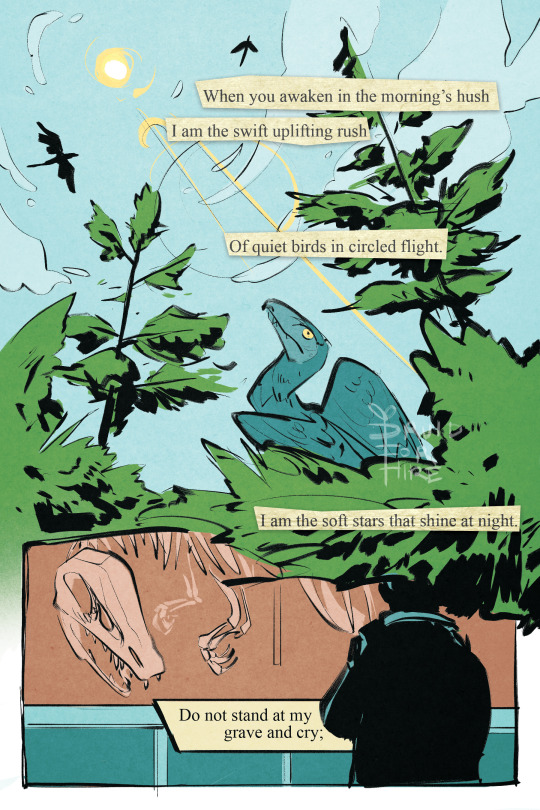
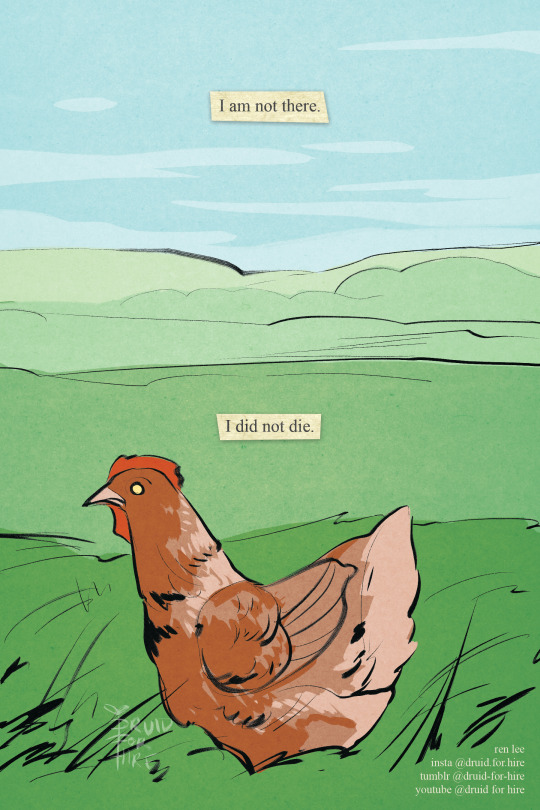
[image id: a four-page comic. it is titled "immortality” after the poem by clare harner (more popularly known as “do not stand at my grave and weep”). the first page shows paleontologists digging up fossils at a dig. it reads, “do not stand at my grave and weep. i am not there. i do not sleep.” page two features several prehistoric creatures living in the wild. not featured but notable, each have modern descendants: horses, cetaceans, horsetail plants, and crocodilians. it reads, “i am a thousand winds that blow. i am the diamond glints on snow. i am the sunlight on ripened grain. i am the gentle autumn rain.” the third page shows archaeopteryx in the treetops and the skies, then a modern museum-goer reading the placard on a fossil display. it reads, “when you awaken in the morning’s hush, i am the swift uplifting rush, of quiet birds in circled flight. i am the soft stars that shine at night. do not stand at my grave and cry.” the fourth page shows a chicken in a field. it reads, “i am not there. i did not die” / end id]
a comic i made in about 15 hours for my school’s comic anthology. the theme was “evolution”
#dinosaur#evolution#comic#prehistoric#animal#wildlife#paleontology#biology#poetry#comics#original#my art#archaeopteryx has no direct living descendants i know#but i wanted something aerial and the dinosaur to bird connection is classic and well known anyway#also the chicken over any other bird is very on purpose#its the mix of truth and comedy and genuineness and the fantastic in the mundane#its me asking you to see something so wonderful in something taken so un-seriously#and to love it both ways#also the jurassic park thing#where someone saw the reconstructed gait of a dino#and said. hey hang on. i know that walk.#and pulled up footage of a chicken walking#which jumpstarted the entire study into the link between dinosaurs and birds#in the end take whatever you want from it i just thought id provide some insight#i always like it when other artists do#the point is that i enjoy when people laugh at the end and when they dont#and i like it when they cry. i like it best when they both laugh and cry. eeaao intent#anyway mourn your losses but to live is to change#also hi guys i finally figured out tipping after 5 months so no more annoying ko-fi link#the antidote to despair is awe
148K notes
·
View notes
Text
Worldwide testimonies about smart meters
Worldwide testimonies about smart meters
Arthur Firstenberg, author of The Invisible Rainbow: A History of Electricity and Life and administrator of International Appeal to Stop 5G on Earth and in Space, recently asked people to email the USA’s New Mexico Public Regulation Commission (PRC) about their experiences with smart meters. ‘Heartbreaking testimonies poured in from around the world. Stories about catastrophic effects on the…
View On WordPress
#Birds#brain fog#brain tumour#chronic fatigue#complaints#disturbed sleep#Dizziness#headaches#Health#Heart palpitations#insects#loss of wildlife#RF EMF#Smart meter#Tinnitus#wireless radiation
1 note
·
View note
Text
Mostly screaming into the void with this one but I'm almost to the end of earning my Bachelor's and I've got something to say.
It is not edgy or subversive to redirect your hatred onto animals that you deem morally impure or to try and yassify misunderstood creatures.
"Sea otters assault their females to death and drown their pups" they are still a cornerstone species worth protecting and whole ecosystems are suffering for the loss of them.
"Sharks are just ocean puppies and big sweeties." No they're not, they are apex predators and you have to treat them with respect. Saying they're not capable of aggression or completely misunderstood is still spreading misinformation, you cannot generalize a group of animals like this.
"Dolphins are super smart and actually capable of understanding that some of their behaviors are evil" I am actually going to break into your house and steal your shoes if you say this to me.
"Charismatic megafauna are useless and overrated and taking away from underappreciated species that Really need our help" wrong again dipshit. Animals like pandas, elephants, whales, and others that I'm sure you're tired of seeing plastered everywhere are important to get the general public involved. It's called PR (and while I wish it wasn't necessary and that people would care regardless I digress) and what conservation work IS done based around them is advantageous to other threatened species that share their habitat.
As someone going into the field of ecological conservation and marine biology, I have met one too many people who think it's okay to say a certain animal doesn't deserve to be protected because it makes them feel yucky or just because they think it doesn't deserve it. I shouldn't have to tell you why that is SO not okay. The underappreciated and overrated can both exist, you don't need to proselytize people into hating dolphins just so sharks can get their dues.
You're also allowed to just dislike an animal! But if you sensationalize their behaviors that are morally incorrect by human standards, then I am begging you to reevaluate yourself, get more educated on the subject, and talk to a real ecologist.
No creature on this planet deserves to be eradicated just because you are personally offended by their natural behaviors or deem them unfit to take up space.
#ecology#marine biology#idk man im tired of seeing busted ass takes like this#esp when they come from my peers who are self proclaimed animal lovers#and then incapable of critically analyzing their narrow minded views of conservation and ecology#this goes for invasive species as well btdubs#those species did not choose to be here and if you take pleasure in their eradication I am judging you severely#managing them is a necessity and there should be no joy taken in the loss of life of these creatures#they deserve your respect regardless#that last one is @ those “wildlife influencers” in florida who think it's fun to torture invasive pythons for views#commentary
232 notes
·
View notes
Text
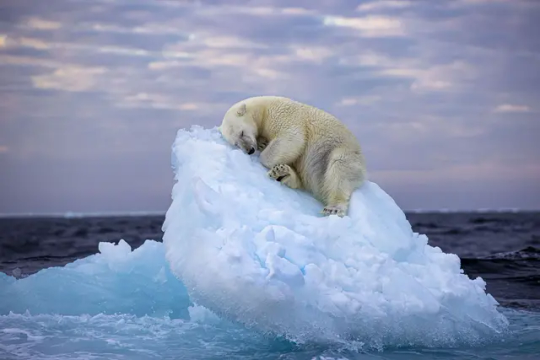
In Dr. Douglas Gurr's words, "This breathtaking and poignant image allows us to see the beauty and fragility of our planet. His thought-provoking image is a stark reminder of the integral bond between an animal and its habitat and serves as a visual representation of the detrimental impacts of climate warming and habitat loss."
This photo is heartbreakingly beautiful. No wonder the ‘Ice Bed’ by Nima Sarikhani won the 'Wildlife Photographer of the Year ' Award.
#polar bears#habitats#climate warming#habitat loss#sleeping bear#touching images#wildlife photography#beautiful nature photography#awww#iceberg#Norway#frozen North#wildlife#wild animals#sleeping animals
197 notes
·
View notes
Text

Grief (color version), digital collage, 2024.
Created while experiencing the loss of a friendship.
[prints/shop]
©Lía Serrano
//
#Lia Serrano#artists on tumblr#artwork#visual arts#photo art#collage#collage art#collage artist#digital collage#grief#nature#birds#nature collage#nature aesthetic#symbolism#surrealism#loss#botanical#vintage collage#lia serrano#fine art#dark naturalism#naturalism#digital art#vintage photos#mortality#dark aesthetic#dark and moody#wildlife#plants
77 notes
·
View notes
Text
I always feel a little spark of hope mixed with worry every time a supposedly extinct species is rediscovered. I worry that the population is too small to be sustained. But I feel hope when the immediate response is to protect the place where the species was found, and--when possible--implement plans to reintroduce more from captive populations.
The thing is, though, that we never know where a rare species will turn up. Every acre of wild land that's torn apart for agriculture, mining, logging, development, etc. is an acre that could be hiding something we haven't seen for ages. More importantly, it's not just the rare species that deserve habitat protection, but those that are still common.
I am in my mid-forties. In my lifetime, the planet has lost two out of every three wild animals. If I make it to ninety, and trends continue as they are now, we stand to lose one out of every three animal and plant (and, likely, fungus as well) species entirely by the time my ninetieth birthday rolls around.
Habitat loss is the single biggest cause of species endangerment and extinction. We can combat the losses by protecting the habitat that is left, and restoring it wherever else possible. Even a tiny balcony or backyard native plant garden provides crucial habitat for native insects and other invertebrates which are among the most important beings in the food web. (Here's a chapbook I wrote on the topic.)
Let's keep trying, not just for the earless dragon, but for all the species still with us today.
#extinction#endangered species#habitat loss#habitat restoration#restoration ecology#ecology#animals#wildlife#conservation#environment#environmentalism
283 notes
·
View notes
Text
And try to believe that maybe more light shines out of those who have the most cracks!
#thoughts#crackship#lostsoul#lost soul#soulmate#dark souls#dark#alive#life quotes#life experiences#sky#quotes#flowers#breakup#moving on#aesthetic#heartache#advice#very relatable#dark vibes#vintage#healing#loss#literature#life#keepmovingforward#inspiring quotes#wildlife#wise words#emotions
23 notes
·
View notes
Text
Golden snub-nose monkey eats an orange
#Monkey#monkeys#golden snub nosed monkey#sichuan#gansu#wildlife#endangered species#endangered animals#funny and cute#cute animals#baby animals#eating an orange#orange#conservation#wildlife conservation#ecosystems#southwest china#habitat loss#natural world#hubei#shaanxi#vegetarian#funny animals#primates
7 notes
·
View notes
Text


It’s not easy to swim 175 km (109 mi.) when you’re starving to death. It’s not easy either to try to survive when you’re shedding body weight at a rate of 1 kg (2.2 lbs.) a day.
And it might be hardest — or at least most tragic — of all if you’re a nursing mom and your calorie intake has dropped so low that you can no longer produce the milk you need to care for your young.
As a new paper in Nature Communications reveals, all of those challenges and more are facing the world’s polar bears, thanks to vanishing sea ice in our warming world, denying the animals a platform that they need to hunt for seals.
If the trend isn’t reversed soon, the estimated 26,000 polar bears in the wild could start to lose their hold on survival before the middle of this century.
The researchers were less interested in establishing the fact of the bears’ food plight; scientists are already aware of that problem.
What they were more focused on learning was both how gravely the nutritional loss is affecting the animals’ health and the alternative food sources they’re scrounging for on land.
To do their work, the scientists followed 20 different polar bears in Manitoba, Canada, from 2019 to 2022, fitting them with GPS trackers and video collars and periodically tranquilizing them and analyzing their blood, body mass, daily energy expenditure — basically a measure of calories coming in versus calories going out — and more.
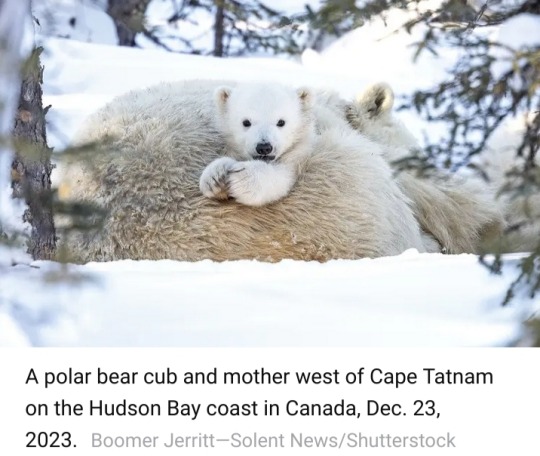
“The polar bears in Hudson Bay [Canada] are probably at the edge of the range at which they can survive right now,” says Anthony Pagano, a research biologist with the U.S. Geological Survey and the lead author of the paper.
“Most of the modeling work suggests that around 2050, they are going to be on land and away from their primary habitat [on the ice].”
The contraction in range of the Hudson Bay community is likely to be reflected in the ranges of the 18 other polar bear subpopulations scattered throughout the Arctic as well.
Across the arc of the study, the data Pagano and his colleagues gathered was troubling.
Weight loss varied from bear to bear, with the daily loss of 1 kg representing just an average.
Some of the subject animals dropped up to 1.7 kg (3.75 lbs) every 24 hours.
That may not seem like much when an adult male polar bear can tip the scales at 550 kg (1,200 lbs) and a female at 320 kg (700 lbs), but it can add up fast.
And with less available to eat, the hungry bears have to travel farther and farther distances to find their next meal.

The individual that swam 175 km — a young female — set the record among the bears studied, but another, older female also covered 120 km (75 mi).
The endurance swims in search of food are energy-intensive and often fruitless for the bears.
They are efficient hunters when they’ve got the purchase of ice beneath them, Pagano and his colleagues explain, but they are clumsy when they are going after seals and trying to swim at the same time.
That leaves them scavenging on land for foods they would not ordinarily eat — and getting little payoff for their efforts.
“Polar bears are feeding on ducks and geese — catching them when they’re flightless and molting — as well as on their eggs,” Pagano says.
Other foods on the desperate bears’ menus included berries and other vegetation, bones, antlers and, in one case, a beluga whale carcass.
None of that fare is as calorie-rich as a steady diet of live, blubber-packed seals.
Some of the bears vigorously sought out these alternative sources of nutrition; others opted for a different strategy: resting and conserving the energy contained in their body mass.
The latter approach costs stored calories, but so does the former, as all of the plodding and searching burns through energy too.
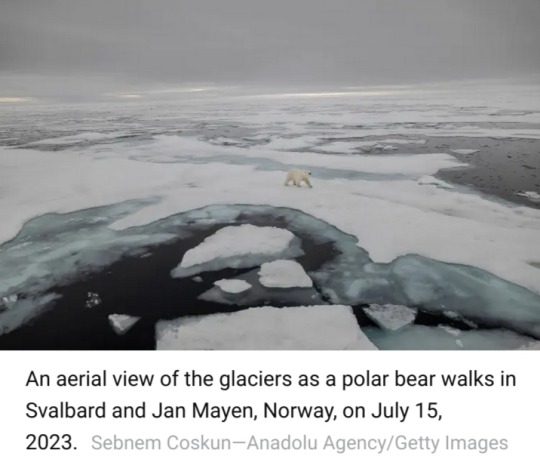
“The amount of body tissue they were burning to try and find those terrestrial foods was basically the same as what they’d get from eating those terrestrial foods,” Pagano says. “So there’s no actual benefit.”
The researchers were surprised to find that the bears were going through not just fat stores to compensate for the poor rations but lean muscle tissue too.
Pagano is not certain why their metabolisms would adopt that strategy, but he has some ideas.
“There's some thought that burning lean body mass might be more energetically efficient in some respects relative to burning body fats,” he says.
“Also, conserving their body fat might provide them better thermal regulation once the winter and the ice return.”
That seasonal freeze-over is shorter than it used to be — though not by a lot.

In the 1980s, polar bears were on land for about 110 days out of the year, with no need to eat terrestrial foods since the fat deposits they’d accumulate thanks to wintertime seal-hunting was enough to carry them the rest of the year.
Now they're off the ice for 130 days on average.
It’s a measure of the nutritional knife’s-edge on which the bears operate that just 20 days can make the difference between whether they live and thrive or starve and die.
The individuals most likely to perish when food supplies are poor are young adults — due to their less-developed hunting skills — and cubs, whose principal source of nutrition, their mother’s milk, can vanish in lean times.
“If females are fasting for extended periods, they will actually stop lactating,” says Pagano.
Full-grown bears are by no means immune to danger, however.
The authors cite earlier research predicting that the adult male population could decrease by 24% if the ice-free summer season increases to 180 days.
This is especially so given the enormous energy intake — about 22,500 calories per day — that the big males need to maintain their body weight.
Polar bears aren’t the only species menaced by these findings. Humans are in harm’s way too.
The more time bears spend off the ice and on land, the greater the likelihood they will wander into cities and towns in search of something to eat — and residents could easily be hurt or attacked if they get in the way of the hungry animals.
People might also even be seen as sources of prey.
“When polar bears are on land, they act like other bears and become omnivores,” says Pagano. “It does raise the potential for human-bear interactions.”
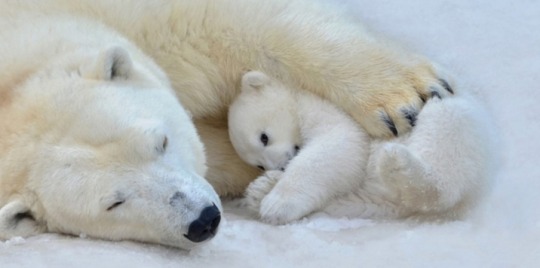

🆘🐻❄️🥺
#polar bears#sea bears#Ursus maritimus#U.S. Geological Survey#Manitoba#Canada#Nature Communications#climate change#wildlife conservation#food source#nutritional loss#animal health#marine mammals#Arctic Circle
11 notes
·
View notes
Photo
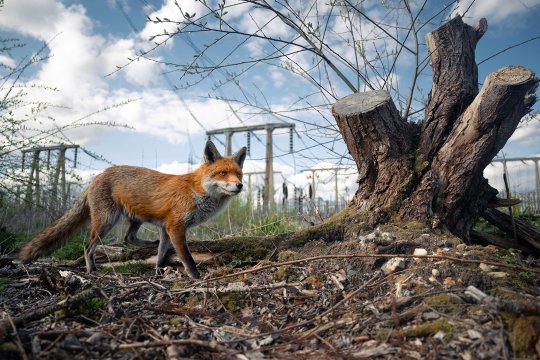
Charlie Page, ‘A Look At The Future’, Overall Winner: British Wildlife Photography Awards (BWPA) (2023)
“Red fox. Lee Valley Park: I knew this area was reliable for foxes, and I wanted a shot with the industrial backdrop. One day when setting up my camera with a remote shutter release, a fox approached from my left. Hesitant about what to do, I stayed still, and surprisingly the fox stopped right in my frame. I took the shot but was confused why it had come so close. In hindsight, this encounter probably tells the story more than the photo itself. Wildlife has become used to us encroaching on them. I think the felled tree and longing look on the fox’s face portray this tragedy perfectly. I hope that all wildlife photography doesn’t look like this in years to come.”
#charlie page#photographers#british wildlife photography awards#bwpa#red fox#animal photography#destroyed habitat#habitat loss
60 notes
·
View notes
Text
Just FYI, if African Wild Dogs do go extinct I will be going insane.
#They are such amazing animals#I encourage all 100 of you to look up the National Geographic Wild “Hot Springs Pack” on YouTube#African Wild Dog#painted dog#african painted dog#endangered#animals#WWF#i don’t know how we just gloss over them they are so interesting and social and unique and are one of the most endangered species in Africa#endangered species#african wildlife#africa#🐛rambles#climate change#habitat loss#Conservation
76 notes
·
View notes
Text
Every single news outlet talking about Jasper is going out of their way to mention how Danielle Smith was “holding back tears” and really emotional about it….
ma’am, your government keeps slashing funding for wildfire preparedness.
#like yeah the loss of Jasper is devasting#and i’m pissed as hell about climate change in general#but idk maybe if the wildlife preparedness budget hadn’t been cut to LESS THAN HALF of what it was five years ago#we would have had a few more resources to tackle this before it burned half of Jasper to the ground#idk tho just throwing things out there#cdnpoli#jasper wildfire#abpoli
2 notes
·
View notes
Text
Emotional and unforgettable encounter with an Asian tusker 🐘📷🚣♀️

#photooftheday#biodiversity#my photos#elephant#animal#trees and forests#woods#forest#photograph#photographer#picture#photography#photographs#biodiversity conservation#biodiversity loss#wildlife conservation#conservation#wildlife photography#wild animals#animal photography#wildlife
2 notes
·
View notes
Text
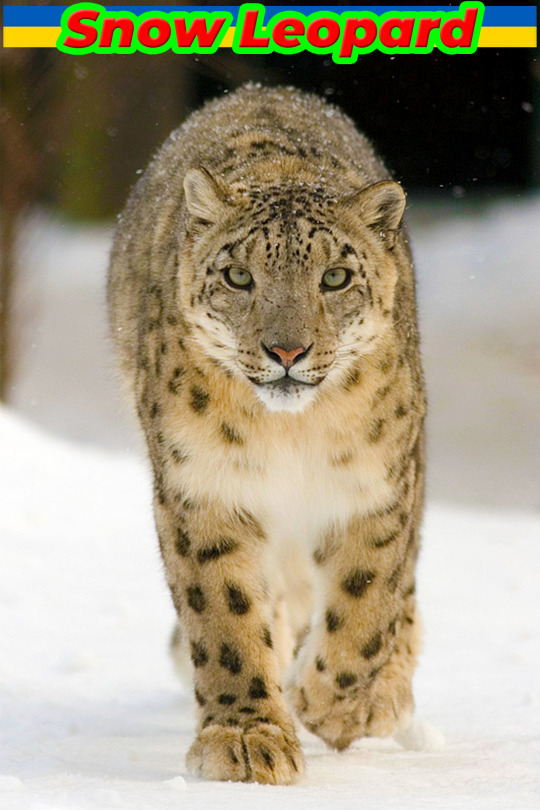
It's October 23rd, 🐆 World Snow Leopard Day! On this day in 2013, in Bishkek, Kyrgyzstan, the Global Forum on the Conservation of the Snow Leopard adopted the landmark Bishkek Declaration on the Conservation of the Snow Leopard, which acknowledged the snow leopard's status as an irreplaceable symbol of its members' natural and cultural heritage and as an indicator of the health and sustainability of their mountain ecosystems.
The snow leopard is under threat throughout its range in Afghanistan, Bhutan, China, India, Kazakhstan, Kyrgyzstan, Mongolia, Nepal, Pakistan, Russia, Tajikistan, and Uzbekistan due to climate change, shrinking habitats, declining prey populations, and poaching.
In the last few years, though, the international community has been making significant progress in the fight to preserve this elusive mountain cat along with its habitat. Conservationists are focusing much of their effort on raising awareness through education. It's crucial that their efforts be intensified in the coming decade, as the big cat’s fate may indeed be decided by our generation. Please join them in their commitment to protecting this fascinating, stunning creature. ☮️ Peace… Jamiese of Pixoplanet
#Jamiese#Pixoplanet#World Snow Leopard Day#Snow Leopards#Snow Leopard#Leopards#Leopard#Kyrgyzstan#Bishkek#Bindi#Bindi Irwin#Biodiversity#Habitat Loss#Habitat Destruction#Wildlife#Wildlife Conservation#Save The Planet#Stop Hunting Animals#Animal Lovers#International Snow Leopard Day#Snow Leopard Art#Snow Leopard Love#Animal Photography#Snow Leopard Cub#Snow Leopard Photography#Endangered Species#Biodiversidad#Animal Planet#Nature Photography#Zoo Photography
3 notes
·
View notes
Text

Grief (bw version), digital collage, 2024.
©Lía Serrano
//
#Lia Serrano#artists on tumblr#artwork#visual arts#photo art#collage#collage art#collage artist#digital collage#grief#nature#birds#nature collage#nature aesthetic#symbolism#surrealism#loss#botanical#vintage collage#lia serrano#fine art#dark naturalism#naturalism#digital art#vintage photos#mortality#dark aesthetic#dark and moody#wildlife#plants
25 notes
·
View notes
Note
Not sure if this is something you would know about but I’m currently writing a paper about how we visualise shorebird habitat loss in the western Americas specifically and part of this involves finding paintings, images, diagrams, that show what the habitat looked like before 1900 or so. It’s an art historical paper so it’s about visual culture and perception of habitat loss through time and I’m struggling to find any good images from before 1900 so I’m exhausting all resources. thank you x
Hi, @a-small-disgrace! That sounds like a really useful project for showing the long-term impact of human activity. If I were going to do that sort of thing on my little area of the coast, I would be contacting the local museum and historical society to see if they had any photos or art of specific locations, even if the landscape wasn't the main focus of the piece. Is this something you've already tried?
Also, if anyone else has any ideas, please chime in in the replies or reblogs.
#a-small-disgrace#art#art history#habitat loss#shorebirds#endangered species#extinction#birds#birdblr#nature wildlife#conservation#ecology#animals
10 notes
·
View notes